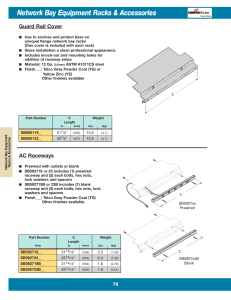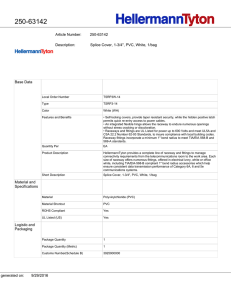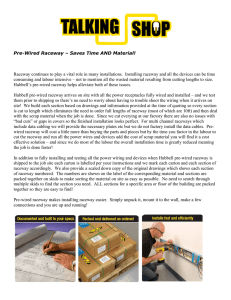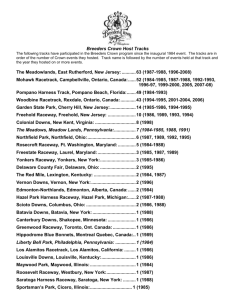Metal Raceway is a Versatile Solution Metal perimeter
advertisement
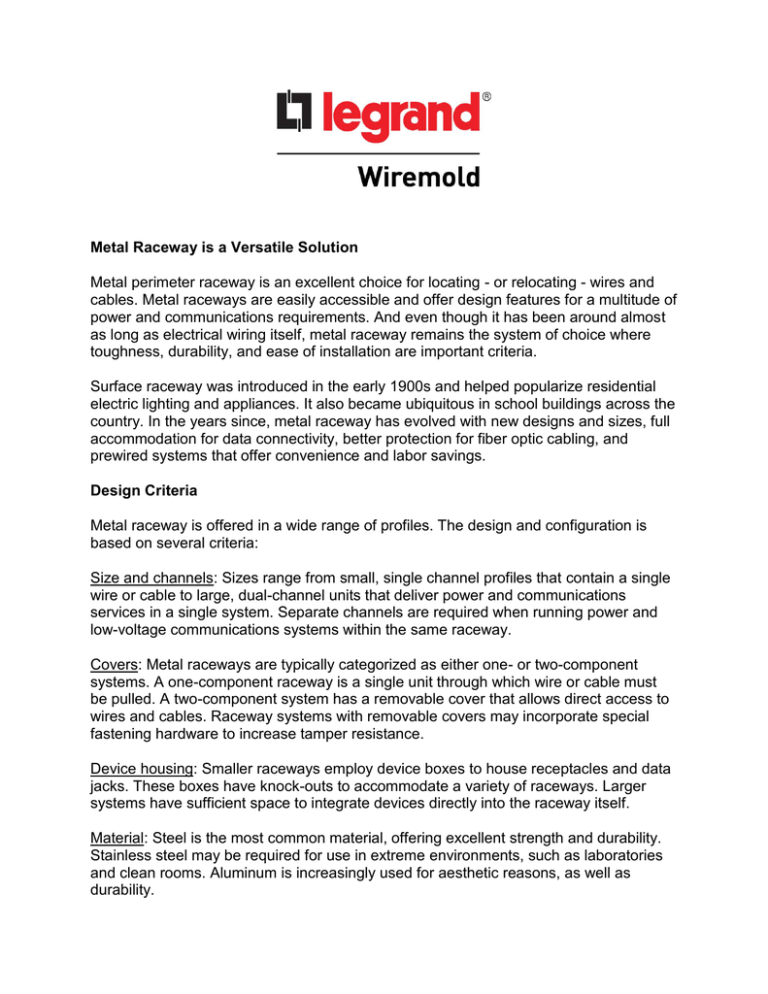
Metal Raceway is a Versatile Solution Metal perimeter raceway is an excellent choice for locating - or relocating - wires and cables. Metal raceways are easily accessible and offer design features for a multitude of power and communications requirements. And even though it has been around almost as long as electrical wiring itself, metal raceway remains the system of choice where toughness, durability, and ease of installation are important criteria. Surface raceway was introduced in the early 1900s and helped popularize residential electric lighting and appliances. It also became ubiquitous in school buildings across the country. In the years since, metal raceway has evolved with new designs and sizes, full accommodation for data connectivity, better protection for fiber optic cabling, and prewired systems that offer convenience and labor savings. Design Criteria Metal raceway is offered in a wide range of profiles. The design and configuration is based on several criteria: Size and channels: Sizes range from small, single channel profiles that contain a single wire or cable to large, dual-channel units that deliver power and communications services in a single system. Separate channels are required when running power and low-voltage communications systems within the same raceway. Covers: Metal raceways are typically categorized as either one- or two-component systems. A one-component raceway is a single unit through which wire or cable must be pulled. A two-component system has a removable cover that allows direct access to wires and cables. Raceway systems with removable covers may incorporate special fastening hardware to increase tamper resistance. Device housing: Smaller raceways employ device boxes to house receptacles and data jacks. These boxes have knock-outs to accommodate a variety of raceways. Larger systems have sufficient space to integrate devices directly into the raceway itself. Material: Steel is the most common material, offering excellent strength and durability. Stainless steel may be required for use in extreme environments, such as laboratories and clean rooms. Aluminum is increasingly used for aesthetic reasons, as well as durability. Prewired Raceway Although perimeter raceway is often assembled and wired on-site, it is also possible to manufacture whole units to job specifications, complete with electrical wiring and receptacles. This "prewired" raceway combines customized design with faster installation and lower labor costs. Unlike field-wired raceway, which requires that components be cut to length and wires be pulled or laid in before devices can be wired, electricians simply mount prewired raceway lengths and connect the feeds. Prewired raceway is especially valuable on projects with short construction cycles and jobs that change in mid-stream, leaving less time to complete the work. Typical applications include schools, laboratories, and similar rooms that require quick installation and predictable, specific wiring. Looking to the Future Perimeter raceway is a proven alternative to conventional in-wall wiring. Metal raceway accommodate facility requirements while providing maximum flexibility and lower life cycle cost. Continued new product development focuses on design enhancements for maximizing wire and cable management, aesthetics, and labor cost savings.
